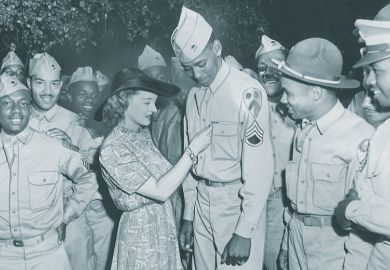François Truffaut wrote that he felt like "a cop directing traffic on the Place de l'Opera as the shells fell on Verdun" every time he gave a bad review to a film, adding that critics and reviewers are indeed "cognisant of the enormous privilege of the act of creation, of the risks incurred by the one who exposes himself thus". It is possible that some contemporary critics and reviewers - there exists something of a pedantic distinction between the two - feel similarly about their profession. But Truffaut knew, as do critics today, that writing about film is fundamentally a respectable activity and does not have to be, as it was once said of writing about music, about as useful as "dancing about architecture".
Good film critics, historians and theorists know that when discussing a film in print, especially a scene that has been broken down into its constituent shots, there is a substantial difference between, on the one hand, using diverse theories and methodologies - structuralism, psychoanalysis and so on - to explain what the director is attempting, and, on the other, unpretentiously describing his cinematic language:the techniques used to convey the story to the audience. The first approach might use elements of philosophy, sociology and perhaps the more recent media and cultural studies, yet generally serves little practical benefit - certainly not to film-makers. The second approach serves a useful didactic purpose: explaining how a director technically "writes" his story using a film grammar that has remained substantially unchanged over the past decades, despite tremendous technological cinematic advances.
Unfortunately, these two books, both concerned with the language and influence of cinema, tend toward the first approach. Watching , a collection of six disparate essays rather than a coherent whole, is the more entertaining and informative. Thomas Sutcliffe's theme throughout is the "narrative codes" and techniques that film directors use to tell their stories effectively in this potent storytelling medium. In his introduction, he frames his discussion by making reference to some good ideas, for example Darwinian theory, that he feels are helpful to readers - and presumably audiences - in understanding our "unthinking responses" to film and how "our reflexes can be triggered by cinema". But Sutcliffe generally fails to make good on this promising introduction and many of his more interesting ideas in the book,for example the chapter concerning the relationship between still and moving images, are waylaid by his verbose literary style.
Throughout The Material Ghost , also a collection of essays, Gilberto Perez throws out terms - modernism, naturalism, classicism - and uses them to describe a small number of directors, including Buster Keaton, Jean Renoir, Michelangelo Antonioni and Alexander Dovzhenko, even if he does not or cannot define them adequately. When he brings in a concrete example, his theorising does sometimes click into place in a genuinely penetrating way, for example, his discussion of the work of Abbas Kiarostami, the director at the forefront of the West's fascination with Iranian cinema. But this is all too seldom and the book remains a superficial and arcane work. It is also badly written and full of vacuous obscurantism - as in an incoherent passage about "appropriateness" and "arbitrariness" in the section about Jean-Marie Straub. More generally, sentences contain so many clauses that the reader becomes bewildered as to the point Perez is trying to make ("Where the vampire appears he typically emerges slowly out of the distance and hovers on the brink of nothing, his lingering far presence dominating all the conceivable objects and interests that lie between, just as, to the existential way of thinking, death for us human beings, who can discern it on the horizon of life, informs every path we may take through the space between").
Perez has apparently written this book in celebration of his real love of the medium of film, but it becomes increasingly clear to the reader that this is not an emotional love. Perez is a scientist by training, even likening film to science in the introduction, and his love of film is more an intellectual one. A single Jean-Luc Godard aphorism - that a film should have a beginning, a middle and an end, though not necessarily in that order - tells us much more about his body of work than the 30 pages Perez devotes.
Pablo Picasso said to Godard that when critics get together they talk about spatial relationships; when artists get together they talk about turpentine. If so, both Watching and The Material Ghost will be found collecting dust on library shelves and not, much more profitably, dog-eared on film sets.
Paul Cronin teaches philosophy at the London School of Economics and is editor of a forthcoming book, Herzog on Herzog .
The Material Ghost: Films and their Medium
Author - Gilberto Perez
ISBN - 0 8018 5673 6 and 6523 9
Publisher - Johns Hopkins University Press
Price - £25.50 and £13.00
Pages - 465
Register to continue
Why register?
- Registration is free and only takes a moment
- Once registered, you can read 3 articles a month
- Sign up for our newsletter
Subscribe
Or subscribe for unlimited access to:
- Unlimited access to news, views, insights & reviews
- Digital editions
- Digital access to THE’s university and college rankings analysis
Already registered or a current subscriber? Login



